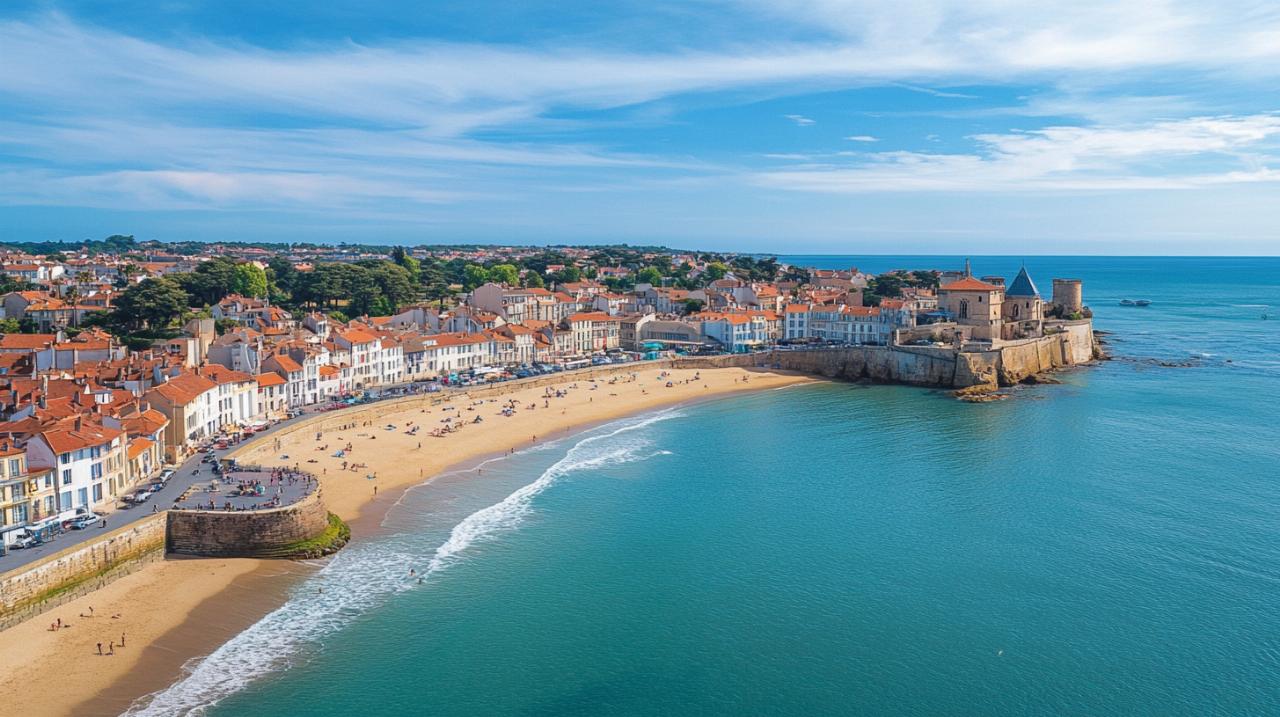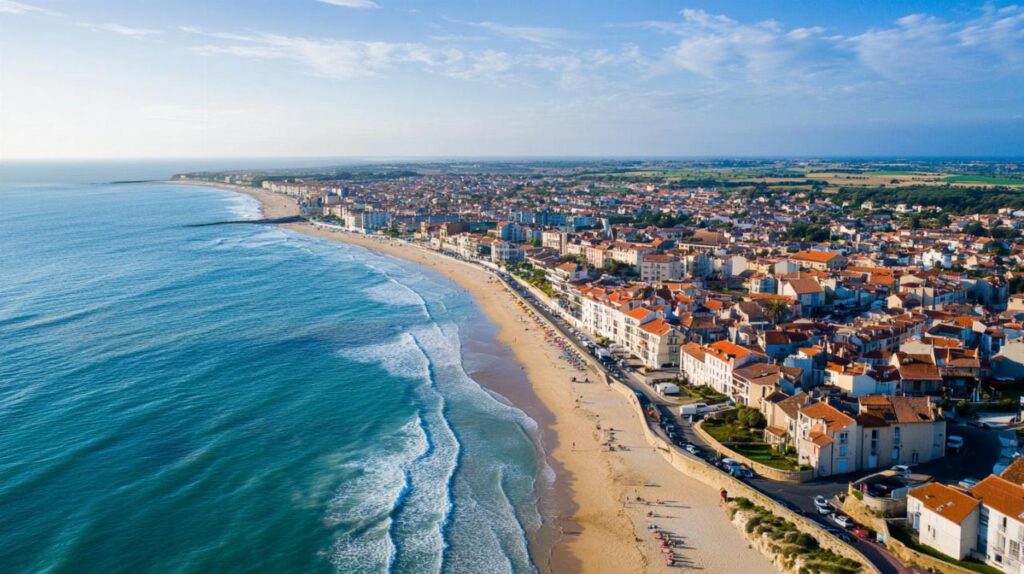The Vendée region of western France has long captivated visitors with its sweeping coastline, charming islands, and rich cultural tapestry. Once part of Bas-Poitou, this corner of the country now attracts roughly three million holidaymakers annually, drawn by over 270 kilometres of coastline where approximately 150 kilometres consist of sandy beaches perfect for family getaways. From the tranquil shores of Noirmoutier to the bustling waterfront of Les Sables-d’Olonne, the Vendée offers a blend of natural beauty and lively entertainment that has made it a cornerstone of French coastal tourism. Yet behind the postcard-perfect vistas and the joyful bustle of summer crowds lies a complex interplay of economic vitality, environmental stewardship, and social transformation that shapes the lives of residents and the character of these seaside towns. For more insights into travel, lifestyle, and contemporary trends, visit https://www.vida-trendy.es/ to explore stylish living and elegant experiences from around the world.
Economic Benefits and Challenges for Vendée’s Seaside Communities
Revenue Generation and Employment Opportunities in Coastal Tourism
Tourism in the Vendée serves as a powerful engine of prosperity, injecting significant revenue into local economies and creating a wealth of employment opportunities. Restaurants, hotels, campsites, and leisure attractions flourish during the peak season, providing livelihoods for thousands of residents. Establishments such as Chez P’tit Louis, where two dozen oysters can be enjoyed for just sixteen euros, exemplify the vibrant culinary scene that draws food enthusiasts from across Europe. Meanwhile, more refined dining experiences at La Marine, offering four courses from eighty-eight euros, or La Table d’Élise, with its three-course menu for thirty-three euros, cater to visitors seeking an elevated gastronomic adventure. The island of Noirmoutier, renowned for its seafood and cycling routes, benefits from a steady stream of guests who prefer a quieter alternative to the more crowded Île de Ré. Until 1971, the Passage du Gois causeway was the sole link to the island, but the construction of a bridge has since improved accessibility, further boosting visitor numbers and commerce.
Beyond dining and accommodation, the region’s attractions contribute substantially to economic vitality. Puy du Fou, a sprawling theme park celebrated for its historical reenactments and live shows, draws families and history enthusiasts alike. With plans to expand across Europe by 2030, including a new park that opened in Toledo, Spain, in 2021, Puy du Fou has become a symbol of the Vendée’s capacity to innovate and entertain on a grand scale. Its flagship production, La Cinéscénie, features nearly 2,500 actors, creating a spectacle that captivates audiences and generates substantial ticket revenue. Adult entry costs thirty-six euros, while children pay twenty-six euros, figures that reflect both the quality of the experience and the willingness of visitors to invest in memorable outings. Similarly, the Hellfest hard rock festival near Clisson attracts around 50,000 fans annually, injecting energy and income into the local economy while reinforcing the region’s reputation as a destination that caters to diverse tastes.
Seasonal economic pressures and property market fluctuations
Despite these considerable benefits, the reliance on tourism brings with it a set of challenges that test the resilience of Vendée’s coastal communities. The seasonal nature of the industry means that many businesses experience a dramatic ebb and flow of income, with bustling summer months giving way to quieter winters when revenue dwindles and some establishments close their doors entirely. This cyclical pattern can strain local economies, making it difficult for businesses to maintain year-round staffing and for workers to secure stable employment. The concentration of tourist activity in a few short months also places intense pressure on infrastructure, from roads and car parks to water and waste management systems, all of which must cope with sudden surges in demand.
The property market, too, feels the impact of tourism’s gravitational pull. As demand for holiday homes and rental properties rises, house prices in desirable coastal areas often climb beyond the reach of local residents, particularly young families and first-time buyers. This trend can alter the social fabric of seaside towns, as traditional communities find themselves priced out and replaced by seasonal visitors or second-home owners who contribute little to the year-round life of the area. For those travelling to the Vendée, options such as Brittany Ferries, which offers return crossings from Portsmouth to St Malo for around three hundred and seventy-seven pounds for a car and four people, make the journey accessible, while camping facilities like Domaine le Midi, with tent pitches starting at seventeen euros and cottages from fifty-six euros for a two-night minimum, or Domaine de L’Oiselière, where pitches begin at twenty-two euros per night and cottages at seventy-seven euros, provide affordable accommodation. Yet the popularity of such offerings can exacerbate the pressure on land and resources, fuelling debates about sustainable development and the need to balance economic growth with the preservation of local character.
Environmental and Social Consequences of Mass Tourism Along the Vendée Coast

Coastal ecosystem strain and beach preservation concerns
The environmental toll of mass tourism is a pressing concern for the Vendée’s 250-kilometre coastline, where fragile ecosystems face mounting stress from human activity. Beaches that once served as tranquil havens for wildlife now contend with erosion, pollution, and disturbance caused by the sheer volume of visitors. Foot traffic compacts sand, damaging delicate dune systems that act as natural barriers against coastal flooding and provide habitats for specialised plant and animal species. Littering, despite concerted efforts to promote responsible behaviour, remains a persistent problem, with discarded plastics and other waste threatening marine life and degrading the aesthetic appeal that draws tourists in the first place. The popularity of water sports and boating activities, while economically beneficial, can disrupt breeding grounds for fish and seabirds, further complicating the task of maintaining ecological balance.
Efforts to preserve the coast require collaboration between local authorities, environmental organisations, and the tourism industry itself. Initiatives such as beach clean-up campaigns, restrictions on access to sensitive areas, and investment in sustainable infrastructure have been introduced in various locations along the Vendée shoreline. However, the scale of the challenge is immense, particularly during peak season when the influx of visitors tests the limits of even the most well-intentioned conservation measures. The tension between welcoming tourists and protecting the natural environment that makes the region so attractive is a delicate one, demanding constant vigilance and adaptive management strategies to ensure that future generations can enjoy the same unspoilt beauty.
Community Identity and Infrastructure Demands in Peak Season
Beyond the environmental realm, the social consequences of tourism reshape the identity and daily rhythms of coastal communities in the Vendée. For long-established residents, the transformation of quiet villages into bustling tourist hubs can be a source of both pride and unease. While the economic benefits are undeniable, the presence of large numbers of visitors can strain local services, from healthcare and education to public transport and emergency response. Roads become congested, queues lengthen at shops and cafes, and the sense of familiarity that characterises small-town life gives way to a more transient, impersonal atmosphere. This shift can be particularly jarring for elderly residents and others who value the slower pace and close-knit relationships that define traditional coastal living.
The cultural identity of these towns also faces pressure as tourism grows. Traditions, festivals, and communal practices that have been passed down through generations may be commodified or adapted to suit the expectations of visitors, risking the erosion of authentic local culture. At the same time, the influx of new ideas, tastes, and perspectives brought by tourists can invigorate communities, fostering creativity and openness to change. Striking a balance between preserving heritage and embracing the opportunities that tourism offers is an ongoing negotiation, one that requires dialogue, respect, and a commitment to ensuring that the voices of residents are heard in decisions about the future of their towns. As the Vendée continues to attract millions of visitors each year, the challenge will be to harness the economic and cultural benefits of tourism while safeguarding the environmental integrity and social cohesion that make this corner of western France so uniquely appealing.

